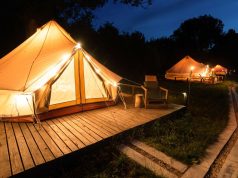Travel photography is more than just clicking shots—it’s about telling stories, preserving memories, and sharing the beauty of the world through your lens. Whether you’re wandering ancient ruins, trekking rugged trails, or exploring bustling city streets, having the right techniques and equipment can turn good snapshots into stunning visual narratives.
1. Understanding the Fundamentals
Before hitting the road, it’s crucial to master the basics of exposure, composition, and light. Exposure involves balancing aperture, shutter speed, and ISO to achieve the correct brightness. Aperture controls depth of field—shoot landscapes at f/8–f/16 for maximum sharpness, and portraits at f/2.8–f/4 for creamy backgrounds. Shutter speed freezes or blurs motion: 1/1000 s for fast action, 1/30 s or slower for intentional blur. ISO amplifies light sensitivity—keep it as low as possible to reduce noise.
2. Choosing the Right Gear
Your camera bag should balance versatility and portability. Here’s what to consider:
- Camera Body: Mirrorless systems (Sony A7 series, Fujifilm X-T) offer compact form factors and high-resolution sensors. DSLRs (Canon 5D, Nikon D850) remain workhorses with robust ergonomics.
- Lenses: A standard zoom (24–70 mm f/2.8) covers most scenarios. A wide-angle (16–35 mm) captures sweeping vistas. A telephoto (70–200 mm) helps isolate details and wildlife.
- Accessories: Lightweight tripod, spare batteries, memory cards, lens cleaning kit, circular polarizer filter, and a rain cover for unpredictable weather.
3. Researching and Planning Your Shots

Scouting locations in advance can dramatically improve your results. Use Google Earth, photography forums, and Instagram geotags to pinpoint prime angles and hidden viewpoints. Note sunrise and sunset times for golden hours, and research local weather patterns to anticipate dramatic skies. If you’re shooting in busy tourist spots, arrive early or stay late for softer light and fewer crowds. Always respect local culture and regulations—some sites require permits or prohibit tripods.
4. Mastering Composition Techniques
Great composition turns ordinary scenes into captivating images. Experiment with these principles:
- Rule of Thirds: Divide your frame into thirds horizontally and vertically, and place key subjects along these lines or their intersections.
- Leading Lines: Use roads, rivers, or architectural features to draw the viewer’s eye into the scene.
- Framing: Natural frames—arches, foliage, doorways—add depth and context.
- Foreground Interest: Anchor wide landscapes with rocks, flowers, or local artifacts in the foreground.
5. Shooting in Challenging Conditions
Golden and Blue Hour
The hour after sunrise and before sunset—known as the golden hour—offers soft, warm light that enhances textures and colors. Blue hour, just before dawn or after dusk, bathes scenes in cool, atmospheric tones. Use a tripod and longer exposures to capture these fleeting moments without raising ISO.
Low Light and Nightscapes
Night photography unlocks mesmerizing cityscapes, star trails, and light painting. Choose a sturdy tripod, a wide-aperture lens (f/1.8–f/2.8), and ISO 800–1600. Use long exposures (10–30 s) and a remote shutter release or self-timer to avoid camera shake. Experiment with foreground illumination—flashlights or lanterns can add creative pops of light.
Weather and Extreme Environments
Rain, fog, and snow create mood and drama. Protect gear with waterproof covers, and wipe droplets off lenses to maintain sharpness. In deserts or on beaches, guard against sand and dust by keeping gear in sealed bags. In high altitudes, monitor battery life and condensation—store gear inside your jacket when not shooting.
6. Editing and Post-Processing Workflow
Post-processing refines your vision. Popular tools include Adobe Lightroom, Capture One, and DxO PhotoLab. A streamlined workflow may follow these steps:
- Import and Organize: Tag and rate your best shots immediately to simplify culling.
- Basic Adjustments: Correct exposure, contrast, white balance, and lens distortions.
- Local Edits: Use brushes and gradients to enhance skies, sharpen details, or darken distractions.
- Color Grading: Apply subtle HSL shifts and split toning to set a cohesive mood.
- Sharpening and Noise Reduction: Tailor settings to resolution and ISO levels to maintain clarity without artifacts.
- Export Presets: Save your go-to export settings for fast delivery to social media, blogs, or prints.
7. Sharing, Monetizing, and Protecting Your Work
Building an audience helps share your stories and may open revenue streams. Post consistently on Instagram, Flickr, or 500px, using relevant hashtags (#travelphotography, #landscape). Start a photography blog or contribute to travel websites. To protect your images online, embed a subtle watermark and add copyright metadata (IPTC). Consider licensing platforms like Shutterstock or Getty Images, or offer prints through services such as SmugMug or Etsy.
8. Inspiring Creativity on the Road

Break out of routine by taking on creative challenges: shoot only in black and white for a day, focus on textures like peeling paint or weathered wood, or tell a story through a series of self-portraits in each destination. Collaborate with local guides, artists, or fellow travelers to discover unexpected perspectives. Attend workshops or photo walks to refine your craft and network with peers.
Conclusion
Travel photography is a journey in itself—one that sharpens your vision, deepens your connection to the world, and preserves memories for years to come. By mastering your gear, honing compositional skills, and embracing both the technical and creative elements of the craft, you’ll be equipped to capture images that inspire and endure. Pack your camera, plan thoughtfully, and get ready to frame the world in your own unique way.
Read inspiring stories from travelers who took a Digital Detox Travel.









